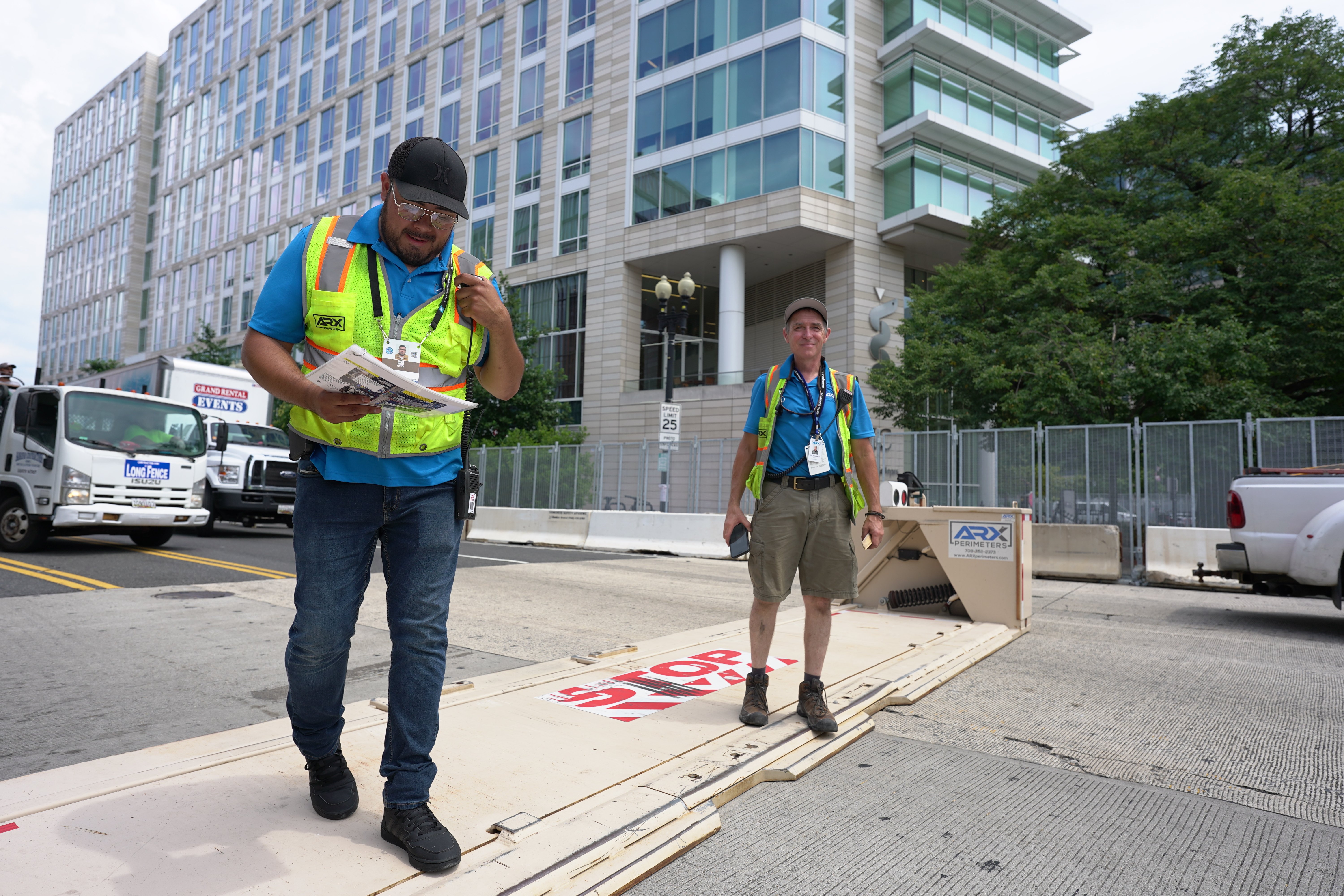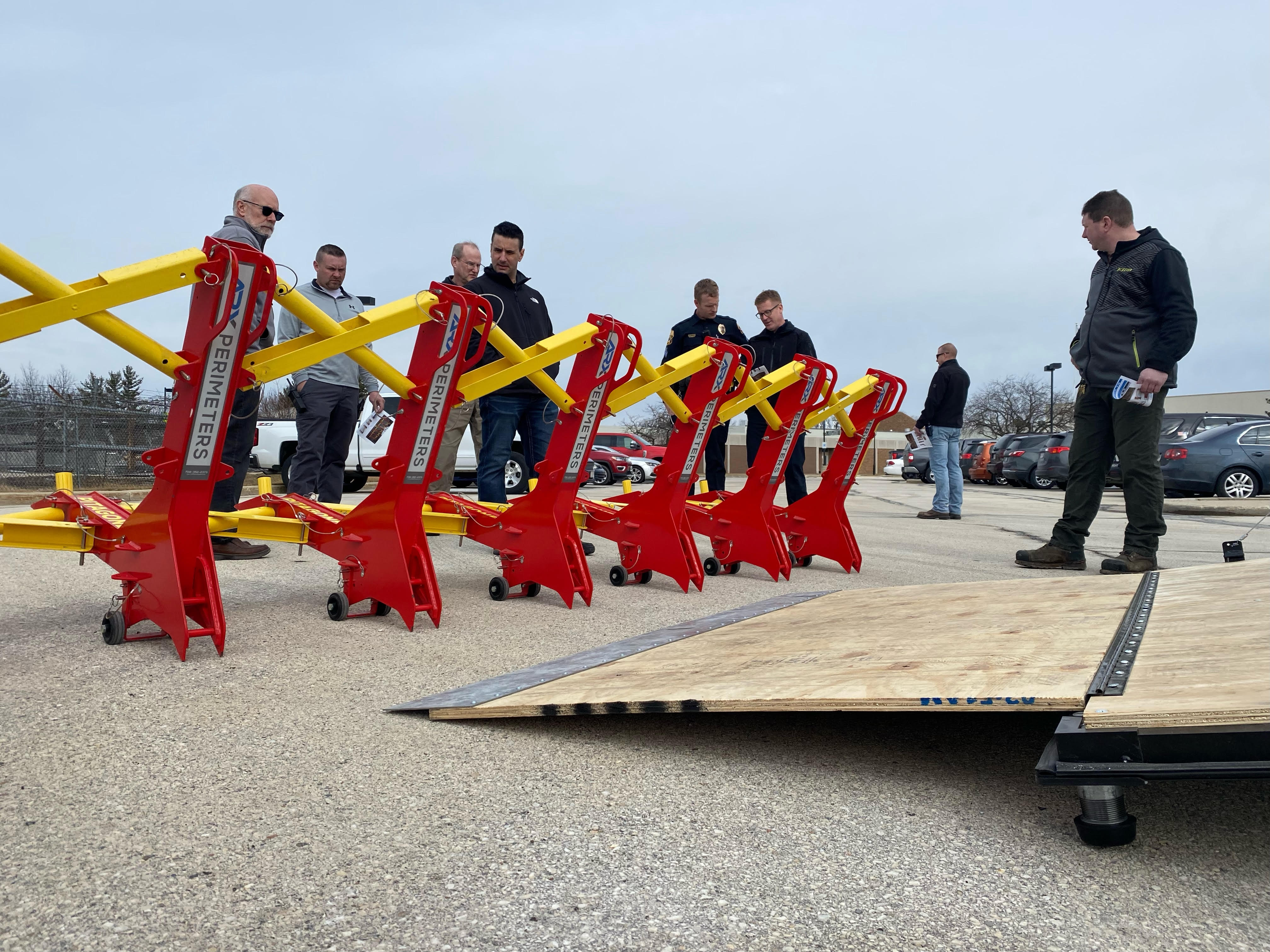The need for a higher level of security for special events around the country have shown a dramatic increase in conversations about vehicle barriers. But what are vehicle barriers and why should law enforcement, municipalities, and other security personnel invest in these systems?
The rise in vehicle attacks have sparked agencies across the country to start the conversation about including these public safety devices into their arsenal.
So…
What are vehicle barriers?
Vehicle Barriers are public safety devices designed to stop vehicles from entering restricted or protected areas and protect people and property from injury or damage should an intentional or unintentional vehicle attack occur.
These barriers could be permanent or temporary systems but, you will typically see mobile vehicle barrier systems deployed for temporary street closures for special events. Emphasizing the mobile, giving your public works or law enforcement teams a rapidly deployed solution to put a hard stop to a real threat.
The permanent vehicle barrier systems are mounted into the concrete, asphalt, or other surfaces. Typically, these are called bollards and have a more decorative look.
What are some examples of vehicle barriers?
There are multiple different vehicle barriers that are used in different applications and hold different crash ratings. The following examples are all temporary surface mounted vehicle barrier systems designed to be rapidly deployed and recovered.
Wedge Barriers
This barrier system is commonly used at military checkpoints, large political events, car holding lots, and other applications with a secure perimeter and high level of traffic for emergency or other authorized vehicles. Wedge barriers come in multiple sizes with different crash test ratings.

They are operated by a manual or remote system that raises and lowers the "wedge". Raising the wedge creates a hard stop for vehicles while lowering allows for them to be driven over by a regular car or heavy machinery.
Mobile Vehicle Barriers
While any vehicle barrier system that can be moved could be considered a mobile system, these specifically can be moved by one or two people. Mobile vehicle barrier systems are often quickly deployed for street closures including; parades, festivals, concerts, farmers markets, sporting events and other special events that require temporary street closure.

These systems are typically modular and are connected with multiple units to create a crash rated barrier. Typically, a mobile vehicle system is built with an integrated wheel system for deployment teams to rapidly deploy and recover the barrier system.
A mobile vehicle barrier system is great in applications where vehicle attacks are a threat but require emergency or authorized vehicles to access a secured perimeter.
Hedgehog Barriers
Do you have special events that require street closures that will have high pedestrian throughput? This system is designed to create a hard perimeter while also making it easy for event attendees to enter and exit the perimeter without being hindered by large steel objects. Typically, each individual hedgehog barrier is connected via cables or chains that are covered by ramps for ease of though traffic.

Bollards
Almost everyone has seen a bollard but might not have realized what it was. If you have visited the Las Vegas Strip, these are lined all across the edge of the sidewalk. These systems are typically permanent fixtures that protrude from the ground but have some serious stopping power. Other permanent forms might be in front of a building.
These systems can also be temporary and portable bollards that can be placed in front of buildings or a secure perimeter to stop a vehicle should an attack or inadvertent vehicle strike occur.

What are some other names for vehicle barriers?
The most common verbiage used for these devices is obviously vehicle barriers but different agencies might use different names for these devices. Some other common names or description of these barriers might include:
- Hostile Vehicle Mitigation (HVM)
- Anti Ram Vehicle Barriers
- Vehicle Barricades
- Mobile Vehicle Barriers
- Modular Vehicle Barriers
- Active Vehicle Barriers
This list represents the most common names we hear but the idea is simple, does this device stop vehicles should a strike occur?
What are the most common applications for vehicle barriers?
These barriers are used in a host of different applications all depending on who is deploying them and for what purpose. The end goal is to create a secure perimeter and prevent loss of life, injury, or damage to property.
Most commonly, we see municipalities using vehicle barriers to control traffic, prevent access, and protect attendees during special events hosted on city streets or public property. Quite often the law enforcement agency or public works is responsible for the deployment and recovery of these vehicle barriers.
The special events that municipalities hold that are frequently protected with vehicle barriers are:
- Parades
- Food truck festivals
- Music festivals
- Local sporting events
- Other public gatherings
Universities have been deploying these systems for a host of occasions. Since Universities hold events like sporting events, graduation ceremonies, and hosting high profile events, the need for a secure space is important.
Some other common applications include:
- Military bases and checkpoints
- Road construction
- Commercial sites
- Data centers
- Professional Sporting events
Conclusion
With the rise in vehicle attacks across the world, the term vehicle barriers is entering into the vocabulary of more folks and the need for these systems are increasing. Vehicle barriers are designed to stop vehicle threats from harming your people, places, and things.
If you’re interested in more information about vehicle barrier systems for your municipality, agency, military branch, or private organization, we are ready to have the conversation when you are. If you need help with a barrier plan, we can also help with that. Reach out to us by visit us here or call us at 708.352.2373.
Related articles

From Perimeter Protection To Complete Site Security: How ARX Became The Leader
Carson Schenk | Aug 12, 2025 8:11:15 AM

What To Look For In A Hostile Vehicle Mitigation System | Vehicle Barriers
Chase Tobin | Feb 26, 2025 9:08:25 AM

Terrorist Drove Around Vehicle Barriers In New Orleans Vehicle Attack
Carson Schenk | Jan 2, 2025 7:28:39 AM


